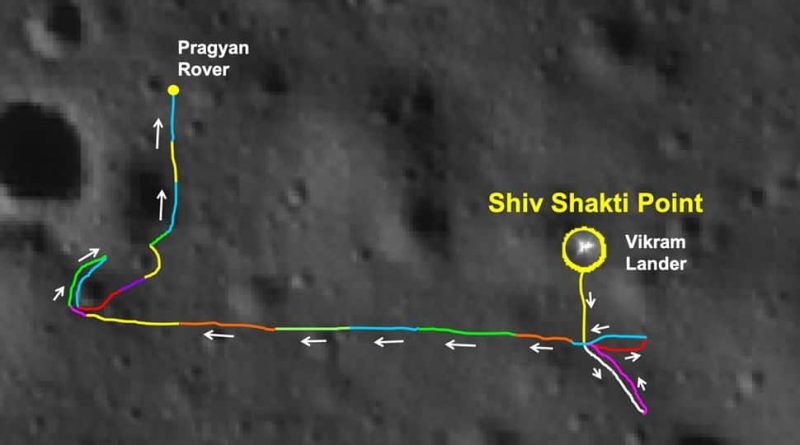Chandryaan-3: Ahead Of India-Pakistan ODI Clash, Pragyan Rover Hits Century; Check Details | Science & Environment News
The world today witnessed the historic launch of India’s Aditya L1 mission to study the sun and the stage is also set for India vs Pakistan ODI match of the Asia Cup. Amid all this buzz, Chandrayaan-3 rover Pragyan has achieved a new feat by covering a distance of 100 meters from the lander module Vikram. Indian Space Research Organisation (ISRO) today said that while the world was watching Aditya L1 launch, Pragyan continued to explore the lunar surface.
“Chandrayaan-3 Mission: Pragyan 100*. Meanwhile, over the Moon, Pragan Rover has traversed over 100 meters and continuing,” said ISRO.
Chandrayaan-3 Mission:
Pragyan 100*
Meanwhile, over the Moon, Pragan Rover has traversed over 100 meters and continuing. pic.twitter.com/J1jR3rP6CZ
— ISRO (@isro) September 2, 2023
The image shared by ISRO shows the rover Pragyan’s trajectory. It also shows the massive crater that Pragyan encountered a few days ago following which the rover was asked to retreat and later sent to a new path. The image also showed the Shiv Shakti Point and the position of the Vikram lander.
Earlier, ISRO had shared a video showing the turn around movement of the Pragyan rover. “The rover was rotated in search of a safe route. The rotation was captured by a Lander Imager Camera. It feels as though a child is playfully frolicking in the yards of Chandamama, while the mother watches affectionately. Isn’t it?” ISRO had tweeted.
Chandrayaan-3 Mission:
The rover was rotated in search of a safe route. The rotation was captured by a Lander Imager Camera.It feels as though a child is playfully frolicking in the yards of Chandamama, while the mother watches affectionately.
Isn’t it? pic.twitter.com/w5FwFZzDMp
— ISRO (@isro) August 31, 2023
Pragyan has so far detected presence of Sulphur (S), Al (Aluminum), Ca (Calcium), Fe (Iron), Cr (Chromium), Ti (Titanium), Mn (Manganese), Si (Silicon), and O(Oxygen) on the moon’s surface and it’s searching for Hydrogen (H). The Vikram lander has also detected seismic activity on the surface hinting that quake also occur on the moon.
India took a giant leap on August 23, as the Chandrayaan-3 lander module successfully touched down on the moon’s South Pole, making it the first country to have achieved the historic feat. The country became only the fourth — after the US, China, and Russia – to have successfully placed a lander on the moon. Prime Minister Narendra Modi later announced that the touchdown spot of the Vikram lander on the lunar surface would from now onwards be known as the ‘Shiv Shakti’ point.





